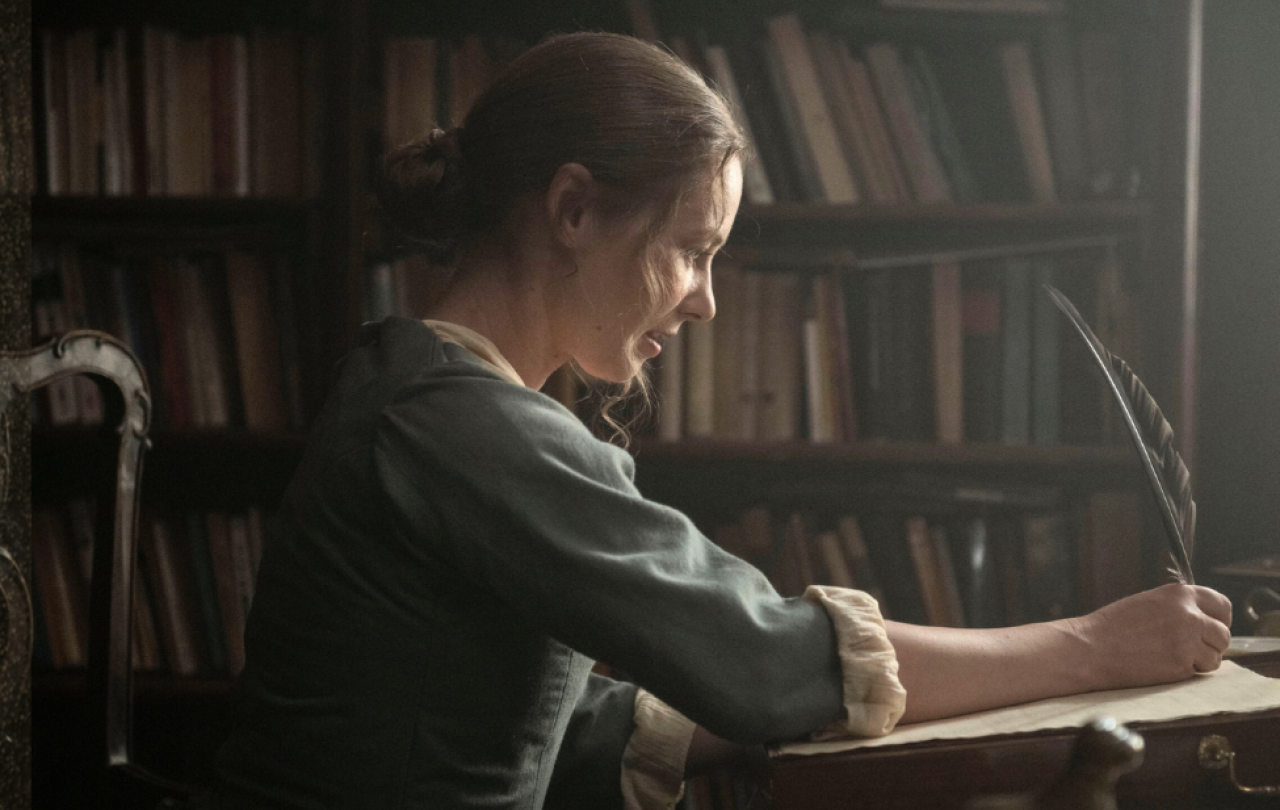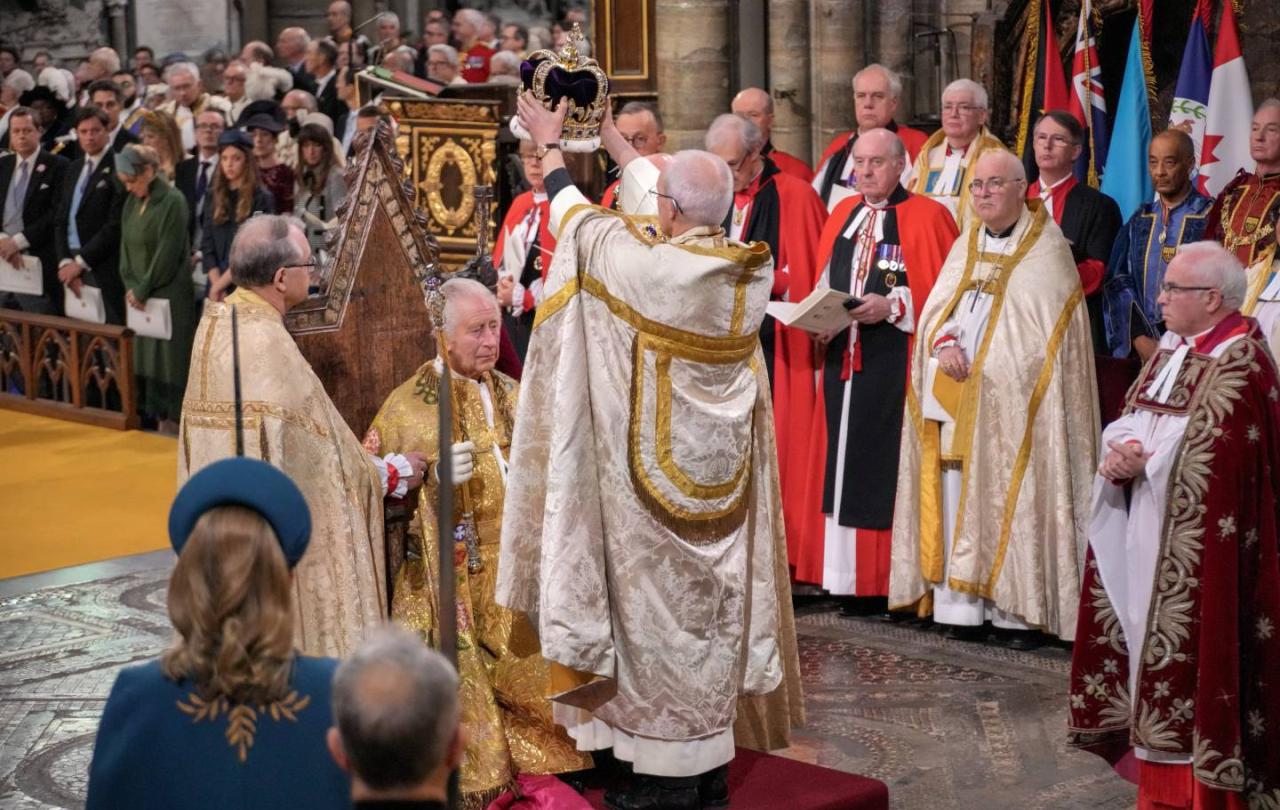
Do Jane Austen’s heroes and heroines really get the happy endings they deserve? Not exactly, argues writer and journalist Julia Yost in her recent essay, Jane Austen’s Darkness (Wiseblood Books, 2024).
Far from an escapist Regency fantasy, Yost paints Austen’s world as one ruled by mediocrity and hatred. While believing that ‘Marriage is the heroine’s only defense against darkness’, an institution where goodness can put up a fight against moral bankruptcy, Yost also ultimately argues that none of Austen’s heroines, with the exception of Elizabeth Bennet’s in Pride and Prejudice, manage to triumph over society’s corruption.
Most Austen readers will be able to recite a list of her villains: Mr. Wickham, Mr. Willoughby, Henry Crawford… but Yost goes beyond this, pointing out that certain universal social malaises – greed, unregulated anger, lack of charity – infect even the supposedly nobler characters in Austen’s novels. For example, Yost interprets Emma Woodhouse’s mocking of Miss Bates, Highbury’s verbally incontinent spinster, not as a sign of immaturity, but as an expression of ‘contempt’ for a social inferior. Another character in Emma, Frank Churchill, is not simply a foolish young man trying to hide an engagement to one woman by flirting with another; he actively ‘enjoys toying with Emma’, and even ‘enjoys torturing Jane [Fairfax]’, his secret fiancée, by spending time with Emma in public. Eleanor Dashwood, Sense and Sensibility’s calm and collected heroine, is guilty of moral compromise by marrying the undeserving Edward Ferrars. Mr. Bennet, Elizabeth’s father in Pride and Prejudice, is an unreformed misanthrope. Vice runs rampant in Yost’s reading of Austen’s novels.
Not even the truly admirable men and women of Austen’s stories are spared from suffering entirely. In Persuasion, Anne Elliot and Captain Wentworth marry under the threat of the soon-to-be-resumed Napoleonic Wars. In Pride and Prejudice, the Darcys’ marital happiness, we are told in the final chapter, is not quite enough to spread moral betterment among their family and friends: Elizabeth’s sister Kitty improves greatly, but Lady Catherine de Bourgh remains arrogant, Mr. Wickham retains his rakishness, and Lydia stays just as thoughtless.
For Yost, showing this universal moral malady does not weaken but rather strengthens the novels’ moral gravity. ‘Austen’s satire is salubrious’, she writes, and agreeing with the Austen scholar D.W. Harding, who, in his 1940 essay ‘Regulated Hatred’, argued that laughing at vice is a ‘means for unobtrusive spiritual survival’ amidst social and natural evils. Austen’s biting condemnation, in other words, is the only way to dispel the power of human vices.
As I was reading Jane Austen’s Darkness, I found myself agreeing with many of Yost’s observations. I’ve spent the better part of the last decade writing about why Jane Austen’s satirical tone serves to make us, the readers, more aware of our failings, so Yost finds a natural ally in me.
Despite this, I was left feeling that something was missing. There’s a dimension of forgiveness to Austen’s narrative pattern that remains largely unspoken. To be fair to Yost, that’s not the focus of the essay. And yet, I’d be remiss not to mention that, in Austen’s novels, we can’t speak of condemnation without also speaking of repentance.
Austen’s characters are undeniably fallible. But human frailty also allows for the possibility for repentance and, ultimately, forgiveness.
For every example of moral failure in an Austen novel, a corresponding example of true remorse can be found. Austen tells us that, after the incident where Emma mocks Miss Bates publicly, she experiences a mixture of ‘anger against herself, mortification, and deep concern’. ‘Never had she felt so agitated, mortified, grieved, at any circumstance in her life’, we’re further told, ‘She was most forcibly struck. The truth of this representation there was no denying’. Emma’s shame pushes her to admit her mistakes to herself. Something similar happens to Elizabeth in Pride and Prejudice, when she realises how blind she has been to Mr. Darcy’s goodness and Mr. Wickham’s deception. Similarly, Yost is right that Mr. Bennet’s misanthropy ‘disables him as a moral actor’, but after his daughter Lydia’s elopement with Mr. Wickham, he begins to feel the force of guilt, knowing that this might have been prevented, had he been more involved in his own children’s upbringing. And if Fanny Price, in Mansfield Park, is passive at the risk of ceasing to be a moral agent altogether, she more than makes up for it when she sternly refuses to marry the rakish Henry Crawford, a man she neither respects nor loves.
Austen’s characters are undeniably fallible. But human frailty also allows for the possibility for repentance and, ultimately, forgiveness. As the late philosopher and Austen devotee Alasdair Macintyre argued in After Virtue (1981), all of Austen’s heroines experience a moment when they recognise their own failings, and this newly acquired virtue of ‘self-knowledge’ allows them to repent and more consciously act as moral agents in the world.
In turn, these true acts of repentance open up the way to mutual forgiveness. After marrying Elizabeth, Mr. Darcy, who’d claimed that he couldn’t easily ‘forget the follies and vices of others’ agrees to reconcile with his aunt Lady Catherine, welcomes Lydia into his house, and even continues to financially support Mr. Wickham for Lydia’s sake. In Persuasion, Captain Wentworth eventually forgives Lady Russell for the role she played in ending his first engagement to Anne Elliot. In Sense and Sensibility, Elinor Dashwood forgives Mr. Willoughby for abandoning her sister Marianne after he confesses how much he regrets his actions.
Even when granted to someone we may consider undeserving, this central act of forgiveness heals broken social bonds. Perhaps, it’s even more healing than the ‘salubrious’ effect of Austen’s biting satire. There is darkness in Austen, but there is also much light. And if her novels prove that moral corruption is ubiquitous, they also make the case that, despite our corrupted nature, we’re not unsalvageable: forgiveness and redemption are always within reach of humankind.
Support Seen & Unseen
Since Spring 2023, our readers have enjoyed over 1,500 articles. All for free.
This is made possible through the generosity of our amazing community of supporters.
If you enjoy Seen & Unseen, would you consider making a gift towards our work?
Do so by joining Behind The Seen. Alongside other benefits, you’ll receive an extra fortnightly email from me sharing my reading and reflections on the ideas that are shaping our times.
Graham Tomlin
Editor-in-Chief





